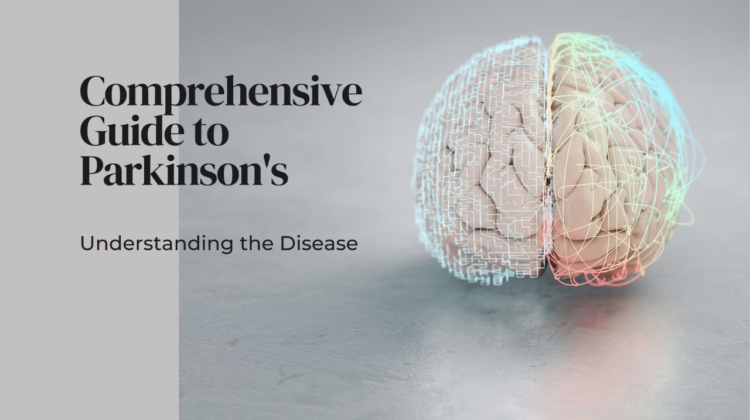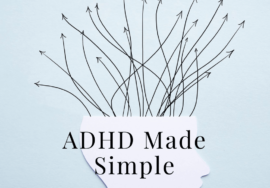
Understanding Parkinson’s Disease: A Comprehensive Guide
Introduction
Welcome, readers! Today, we’re diving into a significant health topic: Parkinson’s disease. It’s a condition that affects the brain and the way the body moves. Whether you’re curious about it, know someone who has it, or just want to learn more, this blog will explain Parkinson’s disease in simple terms. Let’s get started!
What is Parkinson’s Disease?
Parkinson’s disease (PD) is a progressive neurological disorder, which means it gets worse over time and affects the nervous system. Specifically, it targets the brain areas that control movement. It’s named after Dr. James Parkinson, who first described it in 1817.
How Does Parkinson’s Disease Affect the Brain?
To understand Parkinson’s, we need to know a bit about the brain. Our brain has many parts, each with its own job. One crucial area for movement is called the substantia nigra. This area contains neurons (nerve cells) that produce a chemical called dopamine. Dopamine helps transmit signals in the brain to coordinate smooth and balanced muscle movements.
In Parkinson’s disease, the neurons in the substantia nigra start to die. When these cells die, the brain doesn’t produce enough dopamine. This lack of dopamine causes the movement problems seen in Parkinson’s disease.
Symptoms of Parkinson’s Disease
Parkinson’s disease symptoms vary from person to person and typically develop slowly over years. The main symptoms are often grouped into two categories: motor symptoms and non-motor symptoms.
Motor Symptoms
- Tremor: This is one of the most recognizable signs. It often starts in a hand or fingers and is most noticeable when the hand is at rest.
- Bradykinesia: This fancy term means “slowness of movement.” Over time, simple tasks can become more difficult and take longer to do.
- Rigidity: Muscles may feel stiff and inflexible, which can limit the range of motion.
- Postural Instability: This means having problems with balance and coordination, leading to a higher risk of falling.
Non-Motor Symptoms
- Sleep Problems: Many people with Parkinson’s have trouble sleeping or experience sleep disorders.
- Mood Disorders: Depression and anxiety are common in people with Parkinson’s.
- Cognitive Changes: Some may experience memory problems or difficulty thinking clearly.
- Autonomic Dysfunction: This can affect automatic body functions, like blood pressure regulation, digestion, and sweating.
Causes of Parkinson’s Disease
The exact cause of Parkinson’s disease is still unknown, but scientists believe it’s due to a combination of genetic and environmental factors.
Genetic Factors
About 15% of people with Parkinson’s have a family history of the disease. Researchers have identified several genetic mutations linked to Parkinson’s, though having these mutations doesn’t guarantee that a person will develop the disease.
Environmental Factors
Exposure to certain environmental toxins, such as pesticides and heavy metals, has been linked to an increased risk of Parkinson’s. Additionally, head injuries and certain occupations, like farming or welding, may also increase the risk.
Diagnosing Parkinson’s Disease
There’s no specific test for Parkinson’s disease. Diagnosis is usually based on medical history, a review of symptoms, and a physical and neurological examination. Sometimes, doctors might use imaging tests like MRI or PET scans to rule out other conditions. A positive response to Parkinson’s medication can also support the diagnosis.
Treatment of Parkinson’s Disease
Currently, there’s no cure for Parkinson’s disease, but treatments can help manage symptoms. Here are the main treatment options:
Medications
- Levodopa: This is the most effective medication for Parkinson’s. The brain converts levodopa into dopamine, helping to control movement.
- Dopamine Agonists: These drugs mimic dopamine’s effects in the brain.
- MAO-B Inhibitors: These medications help prevent the breakdown of brain dopamine.
- COMT Inhibitors: These extend the effect of levodopa therapy by blocking an enzyme that breaks down dopamine.
Surgical Treatments
For some people, surgery might be an option. The most common type is deep brain stimulation (DBS). This involves implanting electrodes in specific brain areas. These electrodes produce electrical impulses that help regulate abnormal impulses.
Lifestyle and Supportive Therapies
- Exercise: Regular physical activity can help maintain mobility and balance.
- Physical Therapy: Helps with movement problems and maintaining independence.
- Occupational Therapy: Assists with daily tasks and improving quality of life.
- Speech Therapy: Helps with speech and swallowing difficulties.
Living with Parkinson’s Disease
Living with Parkinson’s disease presents challenges, but many people lead active, fulfilling lives with the right treatment and support. Here are some tips:
- Stay Active: Exercise can improve physical function and mood.
- Healthy Diet: A balanced diet helps maintain overall health.
- Join a Support Group: Sharing experiences with others who understand can be very helpful.
- Plan Ahead: Making adjustments at home and work can help manage daily tasks more easily.
- Stay Informed: Learning about the disease empowers you to take an active role in managing your health.
Research and Future Directions
Researchers are continually looking for better treatments and, ultimately, a cure for Parkinson’s disease. Some exciting areas of research include:
- Gene Therapy: Exploring ways to correct the genetic mutations that cause Parkinson’s.
- Stem Cell Therapy: Investigating the potential to replace damaged neurons with healthy ones.
- Neuroprotective Treatments: Developing drugs that can protect brain cells from damage.
- Biomarkers: Identifying biological markers that can help diagnose Parkinson’s earlier and track its progression.
Conclusion
Parkinson’s disease is a complex condition that affects many aspects of a person’s life. While there is currently no cure, advances in medicine and a better understanding of the disease offer hope. With effective treatments and support, people with Parkinson’s can lead fulfilling lives. Remember, knowledge and support are powerful tools in managing Parkinson’s disease. If you or someone you know is affected by Parkinson’s, reaching out to healthcare professionals and support groups can make a significant difference.
Must read:- 7 Tips to Help Boost Your Mind & Body


